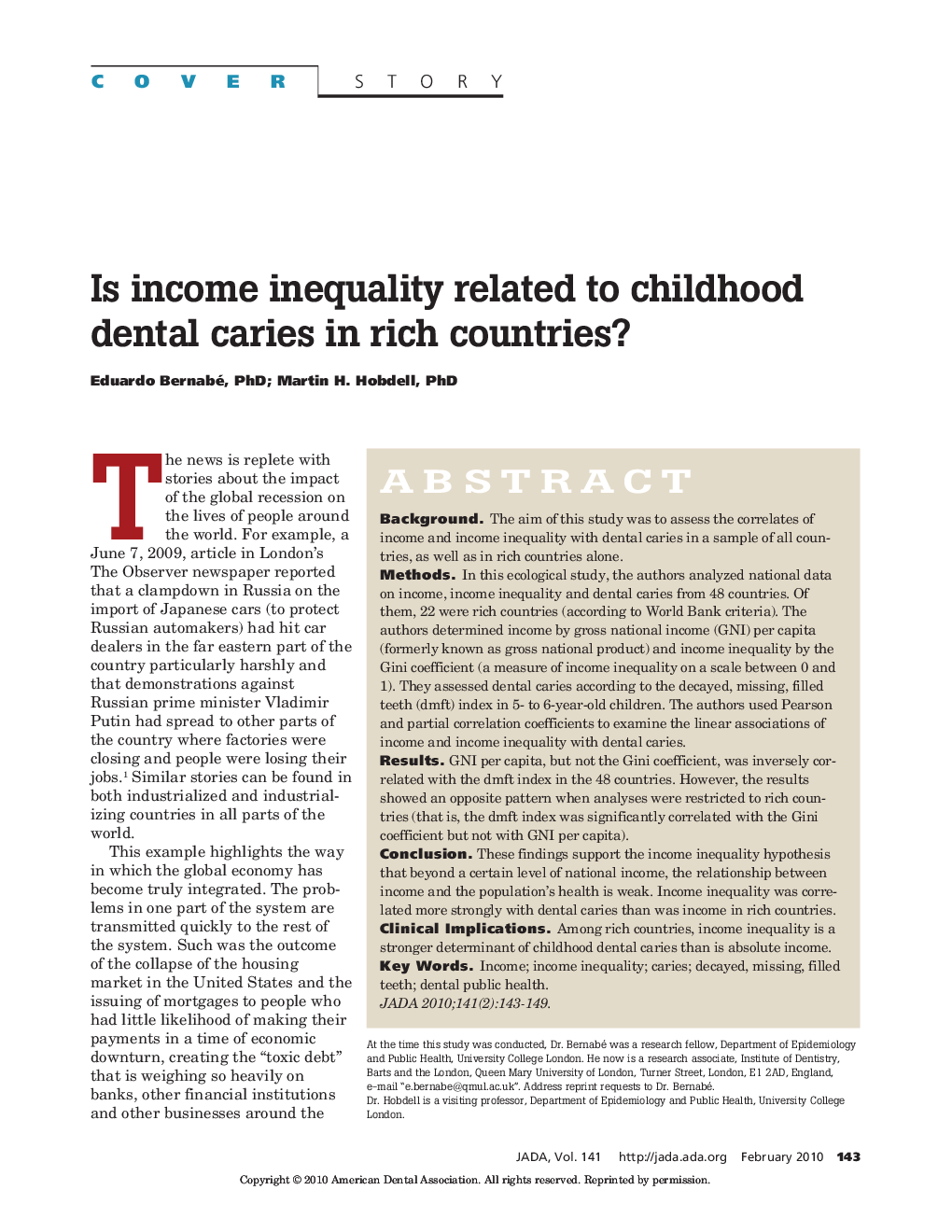| Article ID | Journal | Published Year | Pages | File Type |
|---|---|---|---|---|
| 3138895 | The Journal of the American Dental Association | 2010 | 7 Pages |
ABSTRACTBackgroundThe aim of this study was to assess the correlates of income and income inequality with dental caries in a sample of all countries, as well as in rich countries alone.MethodsIn this ecological study, the authors analyzed national data on income, income inequality and dental caries from 48 countries. Of them, 22 were rich countries (according to World Bank criteria). The authors determined income by gross national income (GNI) per capita (formerly known as gross national product) and income inequality by the Gini coefficient (a measure of income inequality on a scale between 0 and 1). They assessed dental caries according to the decayed, missing, filled teeth (dmft) index in 5- to 6-year-old children. The authors used Pearson and partial correlation coefficients to examine the linear associations of income and income inequality with dental caries.ResultsGNI per capita, but not the Gini coefficient, was inversely correlated with the dmft index in the 48 countries. However, the results showed an opposite pattern when analyses were restricted to rich countries (that is, the dmft index was significantly correlated with the Gini coefficient but not with GNI per capita).ConclusionThese findings support the income inequality hypothesis that beyond a certain level of national income, the relationship between income and the population's health is weak. Income inequality was correlated more strongly with dental caries than was income in rich countries.Clinical ImplicationsAmong rich countries, income inequality is a stronger determinant of childhood dental caries than is absolute income.
